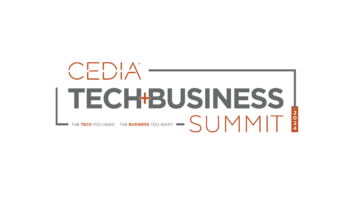NEW YORK — Anyone can be Thomas Edison these days, although one can only guess whether Edison would have closed up shop had he been faced with unrelenting amounts of consumer feedback. “Can I get that light bulb in blue?”
Crowdfunding sites like Kickstarter and Indiegogo — which allow start-up CE companies (and filmmakers and writers and artists) to present their ideas and products to consumers in hopes of raising enough money for development — are the result of a solid marriage of social sharing and digital technology, Ben Arnold, industry analyst at The NPD Group, said to TWICE. “It’s something definitely tailored for our digital age. It’s all about communities coming together online, whether sharing photos or talking or voting with a couple of dollars on what projects they’d like to promote. It’s a sign of the digital social age that we live in.”
On the outside, the plug-and-play slickness of Kickstarter and Indiegogo makes it seem like anyone can be Steve Jobs. Getting involved with these sites is relatively painless, and both groups offer detailed tips, lengthy FAQs and strong support to help further smooth the process.
Despite this support, some start-ups take a digger right out of the gate. They are unprepared for the unrelenting queries, the time commitment and the focus that’s required to getting a project off the ground. Getting noticed can be a challenge, especially when buried beneath the sea of other tech devices. Some, such as Stick-n-Find, maker of sticky Bluetooth receivers, decide to temporarily close up shop and try again when the founders feel the product is more ready to face the masses.
Success on a crowdfunding site can depend on many factors, and presentation plays a weighty role. Campaigns with videos raise 114 percent more money than those without them, according to Shannon Swallow, head of marketing communications at Indiegogo. Kickstarter notes on its website that videoaccompanied projects succeed at a 50 percent rate vs. a 30 percent rate for projects that don’t have them.
Simplicity also helps for getting things off the ground. “I think if you have a project that’s very easily understood by most consumers, [Kickstarter] is a great idea. If you’re making customized iPod docks, for example — something easy for people to understand — it’s a great tool for that. If you’re trying to get deep into some type of technology … something that takes a little of a [tech] background to understand, there are better avenues at this point,” Arnold said.
Being able to witness the process, and the stumbling blocks, is often an education for the consumers themselves, Arnold added. “I think it definitely gives them more of an understanding of how it works and the level of funding it takes to get something off the ground … It [also] helps tell a company’s story.”
Kickstarter’s spokesman Justin Kazmark echoed this, noting, “Kickstarter’s not a store. It’s not really a consumer experience — it’s really one between the audience and the artist, the creator and backers. Part of the value of backing is a closer relationship to the creator, and you’re joining them on the journey. You get this behind-the-scenes look at how things progress along the way.”
And then there’s the feedback. While some start-ups view the feedback as a gift — sort of like instant focus groups without the hefty marketing price tag — others find the advice difficult to swallow at times, especially when it’s bordering on what the developers feel is unrealistic.
At the “Engadget Super Session: Crowdfunding the Hardware Revolution” panel held in New York during the Consumer Electronics Association’s Line Shows event earlier this summer, Alex Devoto, founder and director of Devotec Industries, noted that contributors felt that “they have the right to trash you and ask questions [a million times]” because they are helping fund the campaign.
Kate Drane, Indiegogo director of vertical marketing, development, design and technology, was also on the panel, and she acknowledged that the start-ups that struggle the most are the ones unprepared for feedback. The process is personal, she said. “It’s as much about you as the product you’re developing.”
Campaigns that provide updates to consumers at least once every five days raise about 218 percent more than those that don’t update as often, Indiegogo’s Swallow told TWICE.
Most of the start-ups TWICE spoke with agreed that keeping things simple was the best course of action.
Canary, a portable home security system that had launched on Indiegogo just 24 hours prior to speaking with TWICE — and had already reached full funding — was already experiencing the pros and cons of feedback. “We see hundreds of requests and question and comments,” said Canary founder and CEO Adam Sager. “Everyone has their own specific need and specific products to tackle, so it’s important that we remind ourselves every day to keep things simple, to keep things intuitive, to not try to solve everyone’s problem, to focus on the core components. If we can tackle this problem that people are having … and meet that for most people, I think that will be a huge benefit.”
Sager admitted somewhat sheepishly that Canary is using Apple as a company role model. “When they came out with the first iPod, the experience was simple. It didn’t include many features other MP3 players did include at the time. It was really a beautiful experience, and that went a long way. Sometimes it’s just important to take that approach and focus on core concepts.”
Those who are struck with a great idea — but don’t have the knowledge, contacts or the desire to do the elbow grease required to getting it off the ground — can also turn to Quirky. Since 2009, Quirky has been crowdsourcing ideas to its member communities. For $10, anyone can pitch an idea that will be voted on by the community. Any eventual profits realized are shared among the idea creator, product developers, member community and Quirky’s retail partners.
Using the crowd approach as a means to lift a start-up off the ground does have its downsides. For one thing, getting consumers to discover the product on the site can be difficult. While some startups decide to put all of their focus into their product and let marketing take an “organic approach,” — Jim Sherhart of Connected Data, makers of the Transporter Cloud storage device, said during the Engadget panel that his company did just that — this approach is generally not advised by Indiegogo’s Swallow.
“Many people who launch crowdfunding campaigns have a ‘build it and they will come’ mentality, expecting contributions to come by only posting a project and not playing an active part in its success,” she said, and again stressed the importance of project videos and staying connected with contributors.
There’s also the issue of copycats. As NPD’s Arnold noted, putting your idea out the masses means that you’re opening yourself up to copycats. “I think you probably give away part of your competitive advantage if you have something that’s … a unique idea. It’s very easy for a big tech company to check out Kickstarter and take it back to [their] product guys.”
Not all start-ups choose to go the crowdfunding or crowdsourcing route, of course. LittleBits, which makes toy-like magnetic electronic modules (think Legos meets robots), is exploring a more traditional avenue of fundraising, partially because the company got off the ground before Kickstarter was really an option. “We’ve managed to generate enough interest and excitement that we’ve been able fund in kind of the traditional way without crowdfunding. It’s not really something that makes a lot of sense for us where we are in the company,” said Paul Rothman of product development.
Despite a different fundraising path, LittleBits echoed many of the same challenges it faces as a start-up. “Like most start-ups, we have more ideas and desires of what we want to do than we have the actual capability and resources for,” said Rothman. “I think the challenge is not to extend ourselves because we always want to do a million things at once, and we have a lot of new product ideas in different directions.”
Whatever fundraising path taken, most of the companies TWICE spoke with had one common goal: wide distribution of the product. How they achieved this goal did vary, with LittleBits’ Rothman being somewhat cautious. “We’d like as wide of an audience as possible, and being in retail space is definitely a part of that. But we’re approaching that in a sort of a careful way so that we have very set strategic plans for how we get into the retail market,” he said. “[LittleBits are] a very hands-on product. If you were to just see it on a shelf or hear about it, it might take some understanding. We’re working on our strategy to get into retail and the best possible way.”













